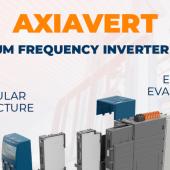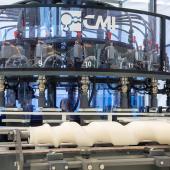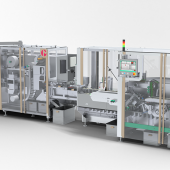The technology that is good for packaging
Minipack Torre, pioneer in heatshrink, chooses Schneider Electric for the electrical and automation components of its Pratika series of packaging machines.
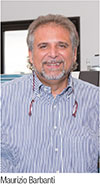 Established in Dalmine (BG) in 1969 by ingegner Francesco Torre, Minipack Torre has revolutionized the field of production of heatshrink systems by introducing, in 1976, a patent designed that reduced the process to a single stage with a compact dome shaped machine. The system is still today at the heart of the systems that the company exports the world over, now having reached 400 thousand units.
Established in Dalmine (BG) in 1969 by ingegner Francesco Torre, Minipack Torre has revolutionized the field of production of heatshrink systems by introducing, in 1976, a patent designed that reduced the process to a single stage with a compact dome shaped machine. The system is still today at the heart of the systems that the company exports the world over, now having reached 400 thousand units.
True to their vocation to innovation and their use of technology to ensure high quality machine performance and productivity levels, Minipack Torre has recently developed the Pratika series, a family of fully automated packaging machines. These models have been designed with numerous Schneider Electric electrical and electrotechnical components, the result of a partnership between the two companies beneficial to both and a business strategy aimed at increasing the performance of the products and the competitive advantage that comes with their use.
Pratika: speed and energy efficiency. The Pratika series of packaging machines comes equipped with servo motors empowered with Schneider Electric electromechanical parts. In addition to the side sealing and center sealing functions, these models combine reliability, high performance, flexibility and safety with a technology featuring high innovation and environmental sustainability.
«The latest model in the range, the Pratika 56 MPS-T, enables users who require speedy production to achieve up to 85 packs/minute, with a substantial reduction in energy consumption», confirms Minipack Torre General Sales Manager Maurizio Barbanti.
To these features can be added the introduction of electronic as opposed to the mechanically powered feed, that avoids the installation of a second supply line for the compressor, thereby further reducing power consumption and all the associated costs.
Furthermore, the possibility of using thinner packaging films entails a further lessening the environmental impact, without compromising the sturdiness of the packs. «With Minipack machine technology latest generation films can be welded», Barbanti states on this count, «and it is essential to start using these films now, given the advances in research on the production of cheaper, less pollutant plastic films». The Pratika range’s adaptability to any material is an added value that few manufacturers can guarantee, «meaning those who already possess the appropriate technology that enables them to follow this trend will be able to pass the competitive advantage onto their end customers».
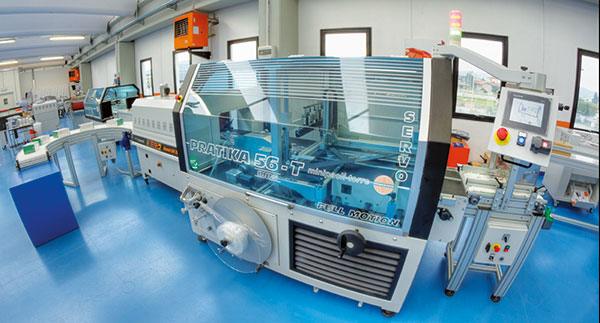
Better performance and userfriendliness. The flexibility and performance of the entire Pratika range is based on the use of the Schneider Electric PLC and motion controller, which optimize operations and, at the same time, help to reduce the need for maintenance. They are also equipped with a color touch screen display - this too supplied by Schneider Electric - which, thanks to the user-friendly graphical interface, can also be easily used by less skilled operators. «The system allows control of the packaging parameters in a simple and intuitive manner» Barbanti goes on to say.
The display also enables you to access the troubleshooting function, allowing early intervention in the face of any malfunctions. «In fact, operators can immediately find a solution rather than wait for machine restoral by specialised personnel, with significant advantages in terms of productivity» The Ethernet port for network connection and modules for remote assistance also enables remote diagnosis and resolution of hitches via the Internet. A key feature especially for manufacturing activities spread over different areas: «The centralized maintenance enables the identification of the nature of faults and preparation of intervention without the need of an onsite visit, here too enabling savings in both time and costs» Barbanti states.
Lastly, a reminder that the display is installed in a control panel placed on a rotating arm, the result of an ergonomic study, which makes the machine usable with greater freedom.
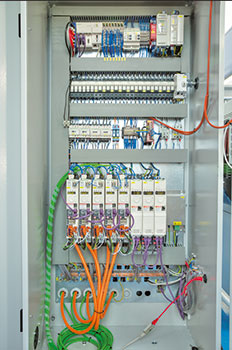 The added value of automation. Schneider Electric technology implemented on Minipack Torre machines offers end-users an additional plus in terms of knowledge of data relating to the operation. Indeed real-time information on the machines can be obtained through a common tablet or smartphone connected to the web. «This is a feature useful for example to plant managers who need to consult data on the quantity of products made or on consumption - Barbanti states - or managers who require personalized information consultable on a commonly used device».
The added value of automation. Schneider Electric technology implemented on Minipack Torre machines offers end-users an additional plus in terms of knowledge of data relating to the operation. Indeed real-time information on the machines can be obtained through a common tablet or smartphone connected to the web. «This is a feature useful for example to plant managers who need to consult data on the quantity of products made or on consumption - Barbanti states - or managers who require personalized information consultable on a commonly used device».
The Pratika series also allows the integration of numerous options that can make a difference and make the use of the machines even more efficient and effective. Starting from the Schneider Electric Harmony XB5S biometric reader, which modulates the access to machine controls according to individual user requirements. «Thanks to the biometric detector for example the machine “understands” whether the user has permission to change the speed programming» Barbanti states. Minipack’s machines can also be equipped with XB5 family Schneider Electric wireless pushbuttons that enable the starting and stopping of the packaging cycle from the beginning of the line without the need for electrical wiring.
Quality “Made in Europe”. Minipack Torre’s commitment to improving quality and performance through technology, with the aim of increasing end user convenience, is here reflected in the enthusiasm expressed in the use of the most advanced solutions marketed by Schneider Electric. «The use of Schneider Electric components make our products European machines assembled in Italy, offering a good example of that “made in Europe” capable of countering the competition from emerging markets. In an industry like our own, for that matter - Barbanti concludes- one can only improve products by integrating advanced technologies that enable the control and reduction of consumption, good operation monitoring, timely action to reduce downtime and that make the machines simpler and easier to use».











